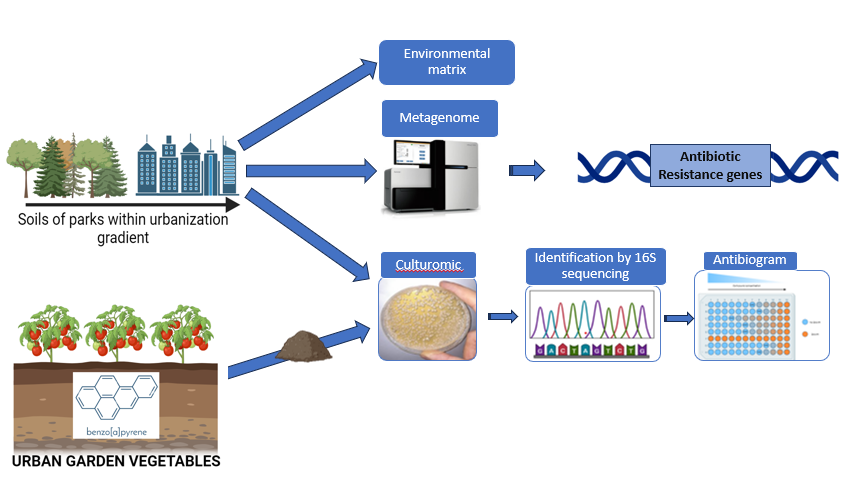Davide Bongiovanni
- 505306
- Phd: 38th cycle
- Matriculation number: 802267
Phd thesis
Antibiotics have been widely administered to treat human and animal infections, reaching an annual use of about 100,000 tons worldwide(Danner et al. 2019). This excessive and prolonged use of antibiotics has promoted the development of “antibiotic resistance” (AMR)(Mancuso et al. 2021). AMR arises from several factors: selective pressure of antibiotics in the environment (hospitals, agriculture), the spread of antibiotic resistance genes (AGRs), and pollution, because the molecular mechanisms that confer antibiotic survival are the same for pollutants.
In light of this serious danger, WHO created a guideline about the correct use of antibiotics and proposed a monitoring plan to track the spread of antibiotic resistance among pathogenic microorganisms(World Health Organization 2022). Despite this monitoring plan being mainly applied in the clinical-hospital sector, it has been demonstrated that the soil plays a relevant role in favoring the spread of antibiotic resistance genes.
In light of this, the objectives of this project are:
- investigate both soil biodiversity and antimicrobial resistance in urban parks and study the association between AMR and environmental and anthropogenic factors in Turin, Milan, Rome and Naples.
- To evaluate the impact of mycoremediation on AMR in an urban garden in Turin heavily contaminated with polycyclic aromatic hydrocarbons.
To achieve these goals, we will use a culturomic approach from which we will obtain information on resistant strains, and a molecular approach, using the metagenome to quantify the abundance of antibiotic resistance genes. These results will be integrated with information on the environmental and social matrix of the studied parks. The overall goal of this project, part of the National Biodiversity Future Centre (NBFC), addressing the priorities of the European research and of the PNRR 2021-27 agenda, is to evaluate antibitiotic resistance in the soil of urban parks and the impact of mycoremediation on the resistome, enabling sustainable plans for creating more sustainable cities.





